It’s almost automatic, isn’t it? A headache pops up, you grab a bottle of Tylenol, and you barely glance at the label before swallowing a couple of pills. Americans buy more than 25 billion doses of acetaminophen every year—that’s Tylenol’s active ingredient. Still, many people don’t know the crucial details: What counts as a safe dose? Can kids take it? Is it okay with alcohol? Sometimes, the smallest mistakes lead to serious health problems, so let’s clear up the confusion and make sure you get it right.
How Tylenol Actually Works And Why You Grab It
Tylenol, or acetaminophen, is everywhere. You see it for headaches, back pain, fevers, cramps, and a lot more. Most folks reach for it hoping for quick pain relief without the upset stomach that comes from aspirin or ibuprofen. Here’s what’s happening under the hood: Tylenol blocks chemicals called prostaglandins that help transmit pain signals and trigger fevers. Instead of dulling the actual source of pain like ibuprofen does with inflammation, Tylenol changes how your brain processes those signals. That’s why you don’t hear about it lowering swelling, but you do hear about it knocking down aches and fevers pretty quickly.
Some people think Tylenol is totally risk-free because you can buy it without a prescription, and there are ‘gentle’ formulas for babies and seniors. But, even something as familiar as Tylenol can become dangerous if taken the wrong way or for too long. According to the FDA, acetaminophen overdose sends over 50,000 people to the ER each year. Around 500 people die from it in the US alone. That’s a staggering number considering most are just trying to get rid of a headache or a mild fever.
If you’re curious about how much Tylenol you can actually take safely, here are some numbers straight from real medical guidelines. Healthy adults should not take more than 3,000 to 4,000 milligrams per day. That’s about eight regular-strength 500mg tablets in 24 hours (but most doctors recommend sticking closer to 3,000mg to play it safe). For children, the rules are even trickier—their dose depends on body weight, not age alone. Always use the dosing cup that comes with the bottle, since kitchen teaspoons vary a lot. One big mistake parents make? Mixing up infant and children’s formulas, which have very different strengths.
Here’s something most people miss: Tylenol shows up in surprise places. Cold medicines, allergy pills, prescription painkillers, and even some sleep aids may all have acetaminophen listed in tiny print. So, if you take Tylenol for your headache and a cold-and-flu syrup for your stuffy nose, you might be doubling your dose without even realizing it. Always read those ingredient lists, especially with combo pills.
Safe Dosage: Getting The Amount Right For Adults And Kids
Getting the dose right is the secret to using Tylenol safely. A little too much, taken too often, can sneak up on your liver and cause real damage. Here’s how to nail it whether you’re looking after yourself or your family.
First, let’s look at adults. Most over-the-counter Tylenol tablets come in 325mg or 500mg strengths. To keep it safe:
- Don’t go over 4,000mg per day if you’re a healthy adult. Many experts, including the FDA and the makers of Tylenol, actually recommend 3,000mg as a safer daily ceiling.
- Always spread doses at least 4-6 hours apart.
- If you drink alcohol—especially if it’s regular (three or more drinks a day)—stay well under 2,000mg a day, or ask your doctor before using Tylenol at all. Alcohol makes your liver much more vulnerable.
Got questions about kids? The math is a little trickier because it’s about weight. The American Academy of Pediatrics says the usual dose is 10-15mg per kilogram (kg) of body weight, every 4-6 hours, not more than 5 times in 24 hours. If you’re not a math geek, don’t worry—most children’s Tylenol bottles come with charts or easy-to-follow dosing guides. The most important thing is to always use the dropper, syringe, or cup that came with the product. Eyeballing it or using kitchen spoons is the fastest way to mess it up.
There’s one more catch: Liquid Tylenol for infants and children comes in different concentrations. Infant drops are usually more concentrated than children’s syrup, so double-check which one you’re using. If you switch brands or buy a generic, check the strength—some off-brands sneak in higher concentrations. Always double-check before giving the first dose.
To make things super practical, here’s a quick reference table:
| Group | Max Dose Per Single Dose | Max Daily Dose | Minimum Time Between Doses |
|---|---|---|---|
| Healthy Adult | 1,000mg | 3,000–4,000mg | 4 hours |
| Child (by weight) | 10–15mg/kg | 75mg/kg | 4–6 hours |
| Senior/Alcohol User | 500–1,000mg | 2,000mg | 6 hours |
See why it’s smart to know the details? Most accidental overdoses are just a mix-up in dose or timing, not deliberate choices. Store Tylenol in a safe spot, too—kids often overdose by mistake thinking it’s candy if it’s not locked away.
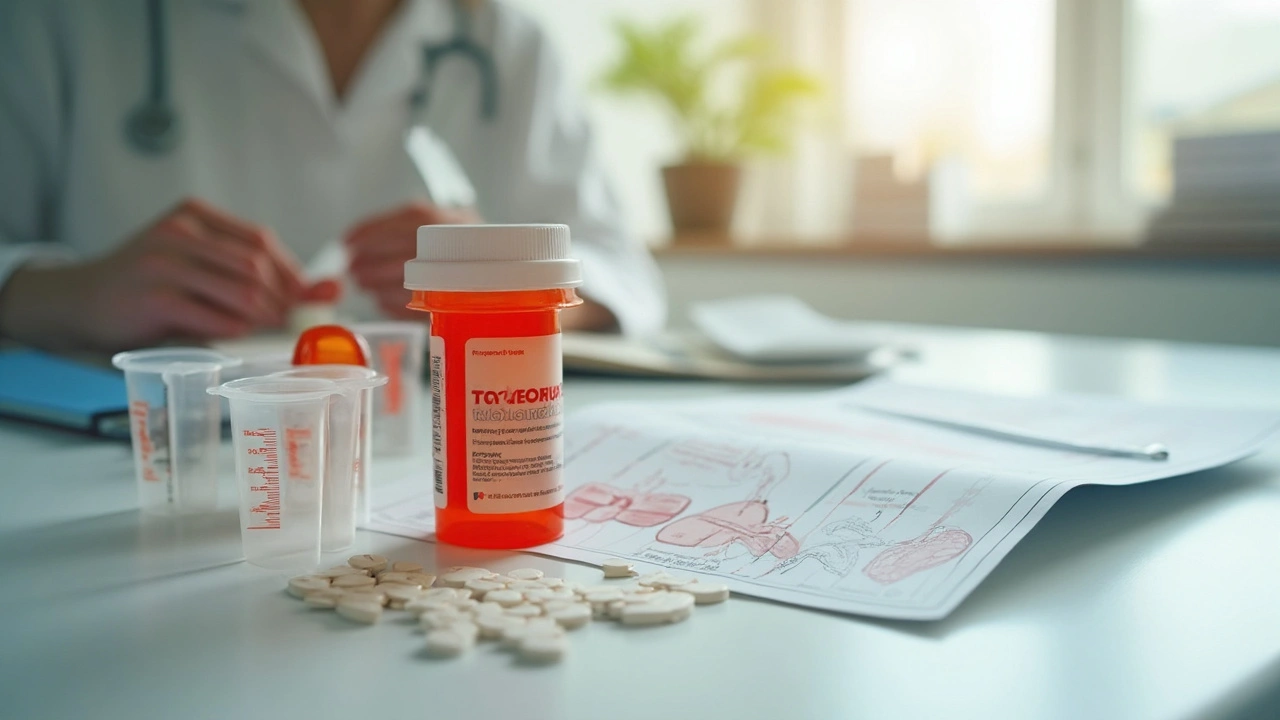
The Truth About Side Effects And Hidden Dangers
Tylenol is trusted by millions, but it’s not zero-risk. Here’s what’s really happening in your body and why it matters. Most people don’t feel any side effects at all if they’re careful with dose and timing. Trouble begins when those doses start to pile up, either by accident or when someone thinks, “Hey, one more can’t hurt.” Acetaminophen overload is brutal for your liver. That’s because your liver is responsible for breaking down nearly all of it—and a byproduct from this process is toxic in large amounts. When you take too much, that toxin builds up and damages or destroys healthy liver cells. In severe cases, it can completely shut down your liver and cause death if not treated quickly.
Symptoms of acetaminophen overdose are sneaky—at first, you may feel just a bit nauseous or have some stomach pain, and it’s easy to blame on something else. But within a couple of days, things can spiral: yellowing skin, confusion, bleeding, and serious pain. Sometimes, people don’t realize how serious things are until their liver is really suffering. The antidote is called N-acetylcysteine (NAC), and it works best if you get help within 8 hours of an overdose. So, if you think you or someone else has taken too much, don’t wait—call poison control, see a doctor, and don’t gamble on feeling better in the morning.
But you may be wondering, are there other side effects besides those scary liver issues? For most adults, normal doses bring almost nothing: no stomach upset, no drowsiness, and no impact on blood pressure—one reason Tylenol is often recommended for those with sensitive stomachs or high blood pressure. In rare cases, some people experience skin rashes, allergic reactions like swelling or itchiness, or a weird rash called Stevens-Johnson Syndrome (super rare but incredibly serious—head to the ER if you see blistering or peeling skin).
Mixing Tylenol with alcohol or with other medications containing acetaminophen is where most trouble starts. Here’s a quick checklist to keep yourself safe:
- Tell your doctor about everything you take, especially over-the-counter cold and pain remedies.
- If you have liver disease or drink heavily, use alternatives or extreme caution.
- Always check expiration dates and never mix and match old, half-used bottles or generics without double-checking the dose.
- Pills work just as well, but don’t crush or split them unless the label says it’s safe—some forms are extended-release and splitting them ruins the timing.
The FDA actually added a “black box” warning for acetaminophen, which is the strongest warning they slap on a drug, due to these liver risks. This doesn’t mean you should fear Tylenol, just respect the limits.
Acetaminophen In Daily Life: Real-World Examples and Safe Habits
People use Tylenol in all sorts of real-life situations, but mistakes can happen even in ordinary routines. Maybe your teenager has a fever and you reach for the children’s syrup but forget to check the weight-based chart. Or your elderly parent takes a combo cold pill with acetaminophen, then later takes more Tylenol for arthritis without realizing it’s doubling up. These are such easy errors, but the consequences can be harsh.
So what’s the safest way to use Tylenol at home? Always treat it like a real medicine, even if it’s OTC. Read the labels. Invest in a pill organizer if you’re juggling prescriptions and over-the-counter pills—miscounts happen. If you keep Tylenol in your bag or purse, keep it in the original bottle or box so you don’t lose the instructions or dosing info. If you write reminders or keep a medication log, jot down the time and amount so you don’t accidentally take an extra dose.
Parents, here’s a tip: Store children’s and adult Tylenol in separate spots, not just different shelves. They look way too similar. And always read the label out loud when giving it to kids, so you double-check the amount and don’t zone out. If you ever miss a dose, don’t double up—just move on to the next scheduled time.
Another smart thing is learning the “hidden” names for acetaminophen in combo or international products. Sometimes it’s called “paracetamol” (especially outside the US), and you’ll find it in painkillers like Vicodin, Percocet, and prescription cough syrups. If you’re traveling, bring your own supply or check ingredient lists carefully. Never be shy to ask a pharmacist if you’re unsure—it might seem like an obvious question, but that’s better than landing in the ER.
People sometimes wonder if Tylenol is habit-forming. The answer: No, not in the addictive sense like opioids. But, if you find you’re popping Tylenol every day or every night, talk to your doctor. Persistent pain means something might need a closer look.
When it comes to expiration dates, acetaminophen is pretty stable. Studies show most tablets last a year or two past the date if you keep them in a cool, dry spot. Liquid forms weaken faster, so pitch those after the expiration month unless a doctor tells you otherwise.

When To Use Tylenol, What To Avoid, And Tips For Special Groups
Let’s draw some clear lines on when Tylenol makes the most sense—and when to skip it or try something else. It’s your best friend for most headaches, muscle pain (without inflammation), menstrual cramps, fevers, and mild dental pain. If you get stomach pain from aspirin, ibuprofen, or naproxen, Tylenol is usually the safer call. The American Heart Association gives it a green light for people with heart disease risk, because it has little to no blood-thinning effect.
But if you have swelling, joint pain from injury, or pain along with redness and heat? Ibuprofen or naproxen often work better, since those calm down inflammation. Always watch out for double-dosing—don’t take Tylenol and a multi-symptom cold/flu product together unless you know the ingredient list.
Pregnant women and breastfeeding moms often reach for Tylenol because it’s considered safer than NSAIDs in most cases. But nothing is absolutely risk-free—so keep doses low, use it only when necessary, and clear it with your OB or pediatrician. For newborns and babies under two months, don’t give Tylenol unless told to by a doctor; fevers in very young infants can be a sign of something serious.
Folks with liver disease, cirrhosis, or hepatitis should avoid Tylenol unless it’s cleared by their healthcare provider. Ditto for heavy drinkers or anyone who already takes other liver-metabolized drugs. Seniors may be more sensitive—stick to lower doses and don’t stretch the daily maximums.
Using Tylenol beyond a few days? That’s when to check in with your doc. If pain isn’t going away or fever keeps coming back after three days, it’s time for a second opinion to hunt down the real cause. No one should rely on any pain med for weeks at a time without a good plan from a professional.
A few quick tips for the medicine cabinet:
- Keep a dosing chart inside the cabinet door for kids and adults.
- Store Tylenol away from heat and humidity—don’t keep it in the bathroom.
- For headaches, try other home remedies (water, cold packs, quiet rooms) before reaching for pills, unless your doctor says otherwise.
- Never give Tylenol to someone who is unconscious or can’t swallow, and avoid extra doses if you’re unsure how much was taken.
A bottle of Tylenol can save the day—but it works best when you use it with a clear head and some solid info in your back pocket. Your liver—and the rest of your body—will thank you for keeping those details in mind.

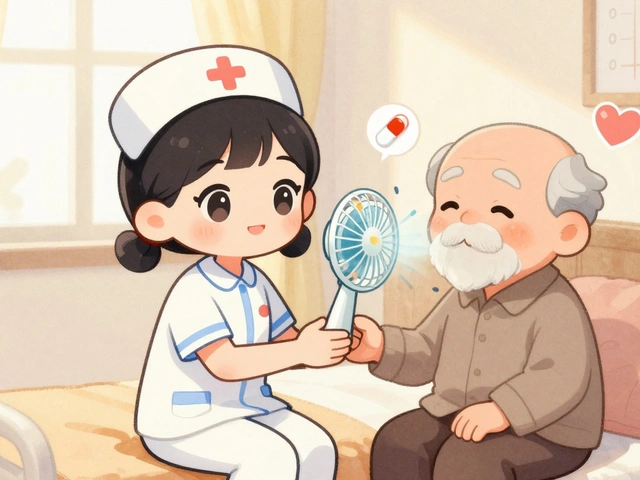


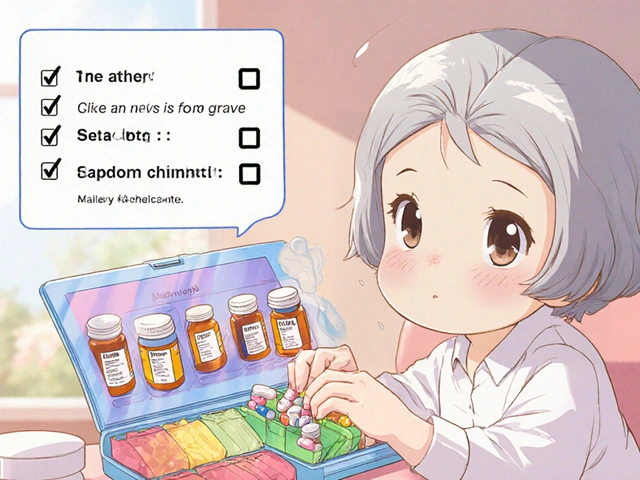

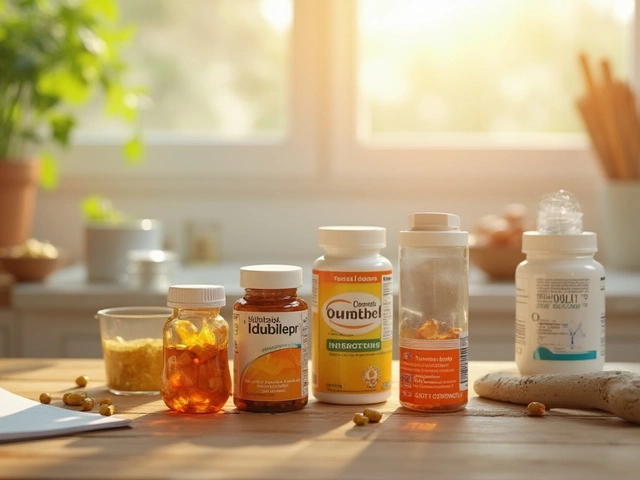
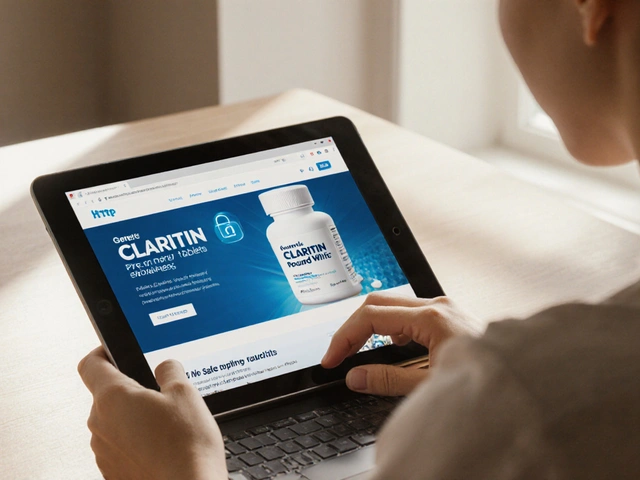
Emily Wang
May 29, 2025 AT 23:19Don’t let a headache ruin your day-measure the dose, stick to the label, and keep your liver happy.
Hayden Kuhtze
May 30, 2025 AT 02:06Ah, the noble art of self‑medication-truly a masterpiece of modern laziness.
One would think that a simple dose‑calculation requires the cognitive abilities of a graduate student, yet many fumble like toddlers with crayons.
Reading the fine print? A pastime for the intellectually adventurous, apparently.
But fear not, dear reader, the dosage chart is practically a work of poetry if you can decipher 5 mg per kilogram without spilling your coffee.
Perhaps next time you’ll consider the audacity of mixing a cold syrup with straight‑up Tylenol-truly avant‑garde.
The liver, that humble organ, is not a sacrificial altar for our convenience.
Overdose statistics aren’t just numbers; they’re a testament to collective short‑sightedness.
If you enjoy living on the edge, remember the black‑box warning is not a decorative badge.
Alcohol and acetaminophen together? A cocktail best left to reckless teenagers, not responsible adults.
Let’s applaud the FDA for trying to keep us alive while we ignore their advice.
In summary, treat Tylenol like any other powerful tool-respect it, measure it, and for heaven’s sake, read the label.
Or continue the tradition of guesswork and hope for the best-your liver will thank you later, perhaps in an ER.
Craig Hoffman
May 30, 2025 AT 04:52Quick tip: adults 500 mg tablets – max 4 g a day, space doses 4‑6 h apart. Kids: 10‑15 mg/kg per dose, don’t exceed 75 mg/kg daily. Use the provided dosing cup, not kitchen spoons. Check combo meds – many cold remedies hide acetaminophen.
Terry Duke
May 30, 2025 AT 07:39Wow, this guide really nails it, folks! You’ve got the dosage tables, the liver warnings, and even the trick‑of‑the‑trade tips for kids and seniors-everything you need to stay safe, and it’s all laid out in such a clear, easy‑to‑follow way. Keep those pills organized, read every label, and your next headache won’t turn into a hospital visit. Stay healthy!
Chester Bennett
May 30, 2025 AT 10:26Great summary! Remember to store Tylenol out of children’s reach and always double‑check the concentration of liquid formulations before dosing. A quick glance at the label can prevent an accidental overdose.
Emma French
May 30, 2025 AT 13:12Be assertive about reading ingredient lists-mixing multiple acetaminophen‑containing products is a common pitfall. Stick to one source of pain relief at a time to keep your liver safe.
Debra Cine
May 30, 2025 AT 15:59Hey everyone! 😊 This guide is super helpful-thanks for breaking down the dosing math and the hidden dangers. 👍 Remember, a little caution goes a long way for our health!
Rajinder Singh
May 30, 2025 AT 18:46In the grand theater of everyday medicine, Tylenol assumes the role of the silent protagonist-ubiquitous yet oft‑underestimated. Its modest demeanor belies a potent biochemical choreography that tempers pain and fever without the overt drama of inflammation. Yet, as with any actor on stage, a misstep-be it an overdose or an unseen interaction-can culminate in a tragic denouement for the liver. Let us, therefore, accord this humble analgesic the respect it deserves, honoring both its utility and its limits.
Samantha Leong
May 30, 2025 AT 21:32I understand how overwhelming all the dosage information can feel. Rest assured, following the weight‑based chart for children and staying under the daily maximum for adults greatly reduces risk. If you ever feel uncertain, a quick call to your pharmacist can provide clarity.
Taylor Van Wie
May 31, 2025 AT 00:19Americans need to stop acting like they own the world’s supply of Tylenol and start taking responsibility for their own health-read the labels, don’t abuse the drug.
carlee Lee
May 31, 2025 AT 03:06Thanks for the clear guide-very concise and useful.